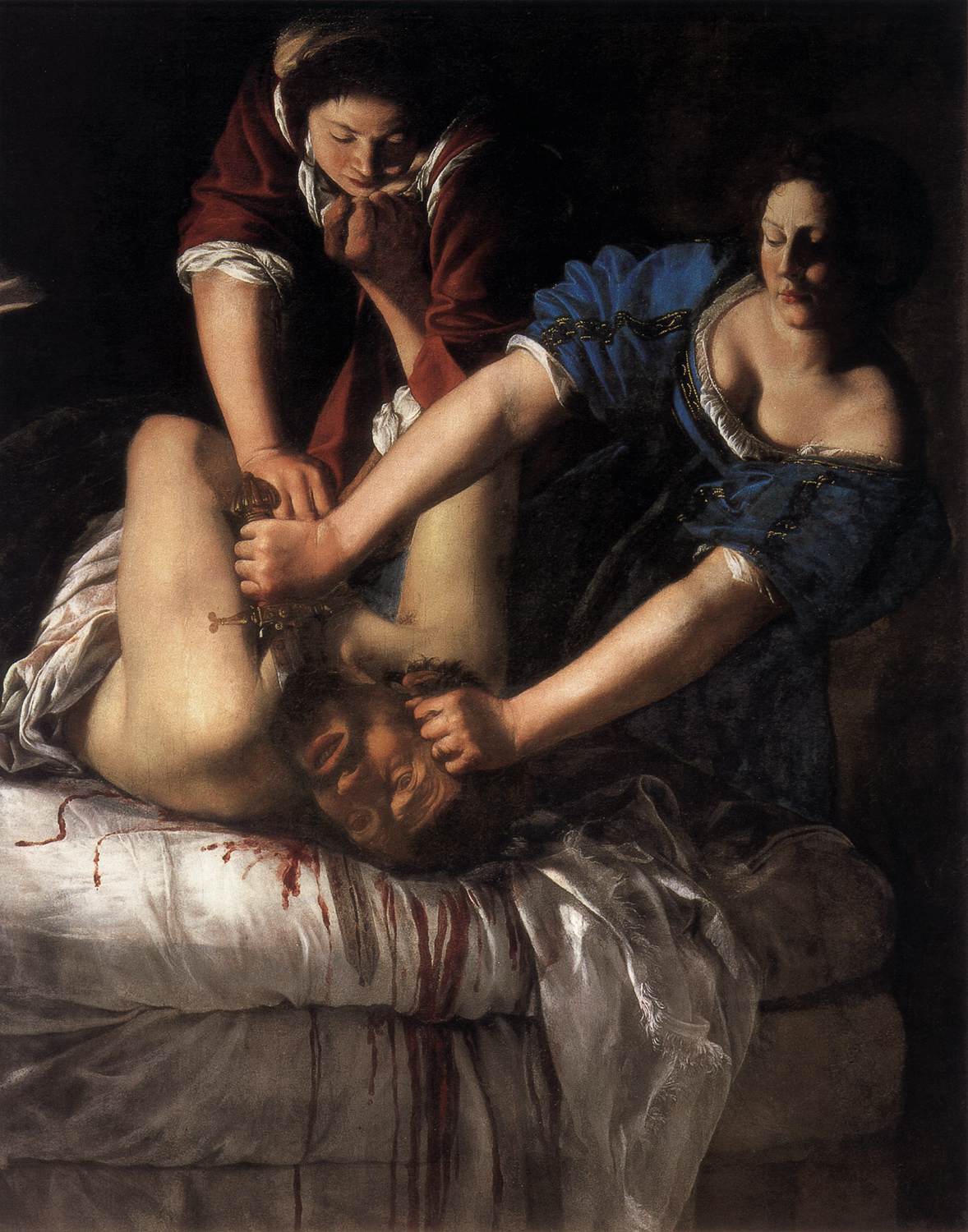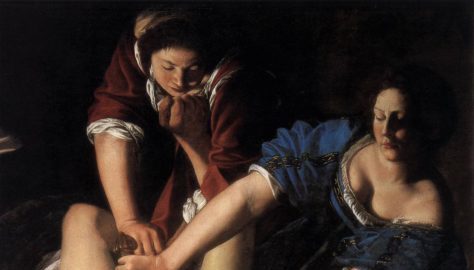
Chanukah has always been regarded as a holiday about resistance. So in these #metoo times of women speaking truth to power, you can make sure your celebration includes the story of a courageous woman rising up to defeat a fearsome enemy. The Book of Judith is coming back.
In this story, the ancient people of Bethulia block the path to Jerusalem of an invading Seleucid army. Furious, the bloodthirsty General Holofernes lays siege. As water supplies dwindle and infants and elders fall sick, the starving population prepares to surrender.
Enter our badass hero, a childless widow with a bold plan. Judith convinces the Bethulians to give her a few days to save the city. She uses her last drops of water to bathe and dresses in her finest robes. She laces up her sandals to show off her smooth ankles and heads down the mountain to the enemy camp. She convinces Holofernes that she has information critical to his success and will betray her people because they are no longer following their strict religious diet. (OK, they are starving to death and trying to survive, but luckily Holofernes isn’t up to date on his Torah studies.) Holofernes and his men are a little nervous about the strange Hebrew God who, rumor has it, sent plagues down on the Egyptians, so they welcome Judith as a turncoat. They even throw her a party.
At the bacchanal, Judith shares her goat cheese with the general, a salty snack that leaves him thirsty. When she gets him alone in his bedroom (she wore those sexy sandals for a reason) she plies him with wine until he passes out drunk. She then uses his own sword to cut off his head, which she carries back up to Bethulia in her cheese basket. Judith’s success inspires her people, who rally to chase off the invaders. The story of Judith is sung throughout Judea, encouraging her relatives, the Maccabees, to rise up against their oppressors. But we all know that part of the story.
Judith’s cunning and bravery has been resurrected throughout history as a symbol of the weak challenging authority. An iconic painting by Artemisia Gentileschi shows the artist herself as Judith, slashing the head off of a Holofernes that resembles Gentileschi’s rapist. In Florence, a statue by Donatello bears the inscription “Behold the neck of pride severed by the hand of humility,” referring to Medici rule. One of the Chanukah lamps decorated by a triumphant Judith is said to represent Empress Maria Theresa of Austria standing up against Frederick the Great in 1741. The list goes on.
Some Sephardic communities have celebrated Judith for centuries. Traditionally, the seventh night of Hanukkah is reserved for, chag habanot, or Festival of the Daughters. Women study Torah, celebrate their daughters, and enjoy special treats prepared by the men. These treats are dairy based in honor of the cheese Judith used to trick Holofernes.
American Jews are now reinventing the Festival of the Daughters tradition. Why not indulge in wine and cheese one night of Hanukkah and tell her story? Why not use one of the fantastic recipes out there to make cheese latkes? Why not let the men cook and clean one night so the women can rest and tell our own stories?
And these day, with women risking everything to tell our stories, to run for office, to #resist in these crazy times, we all could use a little more courage every day. Perhaps celebrating the story of Judith at Chanukah will embolden us as we march forward into our own battles.
Melina Selverston-Scher is a writer based in San Francisco. She recently completed a historical novel based on the story of Judith and Holofernes called For You and All of Us. Her blog is: What Would Judith Do.
Gentileschi’s painting via Wikimedia.









Its like you read my mind! You seem to know a lot about this, like you wrote the book in it or something. I think that you could do with some pics to drive the message home a little bit, but instead of that, this is fantastic blog. An excellent read. I will definitely be back.
Şişman porno, Şişman alman, Yaşlı şişman, Yaşlı
porno, Yaşlı olgun porno, Yaşlı kilotlu çoraplı porno 10:03 Şişman porno, Şişman alman, Koca götlü koca memeli porno,
Amatör göt sikiş.
Fantazi kostüm modelleri ve seksi kostüm modellerinde bol çeşit, %70’e
varan indirimler, gizli gönderi ve hızlı kargo seçenekleriyle
‘da.